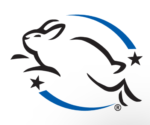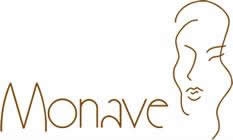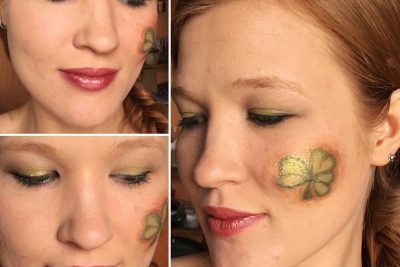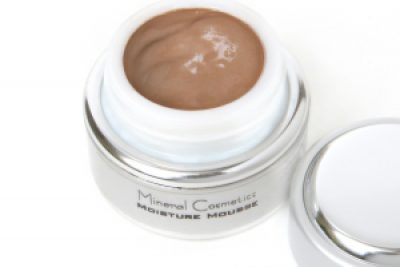We’ve all been there; standing in the beauty section of a store, with a product in our hands, not able to understand half of more of the ingredients listed on the back of the product. Some of them are s o o o o o long! We’re sleuthing the internet to try to learn about each one, but with so many, it can get tedious! Here is a guide on how to choose products and brands you can trust for your beauty needs, so you can avoid those awkward, rushed investigative sessions!

1. Look at a brand’s website:
My first word of advice, is to search out a brand’s website. If you’re shopping online, it’s easy-peasy, you can hop to another tab and check them out. If you’re in a store, try snapping a photo of a product brand, and ingredients, and then go home to do your research. Elements on a brand’s that you want to look for, to have the comfort of knowing you can trust it, are:
~ a mission statement, and backstory
~ a thorough explanation of each ingredient used in the products
~ designations such as organic, certified organic, wild-crafted, cold-pressed, and/or vegan
~ country of origin where the product is manufactured
~ a commitment to (and visceral evidence of ) inclusion
~ address for the company’s headquarters
~ a customer service phone number, hours and an email contact form
The first and most important element on a company’s website is their mission statement. What are their goals & their dreams? What led them to their mission? Did it develop from a personal healing experience after handcrafting products at home? Was it a mother-daughter venture? Did the founder have a dream to make the world a better place?
Here’s an example of a mission statement:
OUR STANDARD
( ______ Cosmetics) Inc. prides itself on the integrity and transparency of which it was founded. These core principles were the catalyst in developing clean, mistake proof and results driven beauty products, which have paved the way for the natural beauty industry for the past 25 years. Without compromising aesthetics , functionality, or accessibility, ( _____ ) products offer consumers earth conscious and ethical options to their beauty needs. All products are made from 100% natural ingredients with no synthetic chemicals or animal by products.
Elements to look for in a mission statement are:
~ a commitment to purity
~ a commitment to transparency
~ a commitment to the well-being of the planet
~ a commitment to the well-being of the customer
~ a passion for beauty
~ a passion for product efficacy and quality
Now, of course, as discerning customers, we cannot just believe anything we read, so;
2. The next step is to look for certifications:
~For vegan products, look for the Leaping Bunny seal of approval. Leaping Bunny certifies each brand on their website yearly. We do not recommend PETA for certification at this time. Please refer to the handy guide below to find out if a brand you are considering purchasing is certified as cruelty-free at each stage of the process.
https://www.leapingbunny.org/shopping-guide

~For organic certification on single note plant products, such as an oil, a hydrosol, or an herb, there are several certifying agencies. For US brands, the USDA, through it’s NOP program certifies agricultural products as organic. This is the emblem to look for on branded labels, and websites:

~For cosmetic products, Ecocert provides COSMOS certification
The COSMOS-standard covers in detail all aspects of the sourcing, manufacture, marketing and control of cosmetic products. The certification bodies inspect each of these aspects when certifying an organic or natural product.
ORIGIN AND PROCESSING OF INGREDIENTS
Standards for water, minerals and ingredients of mineral origin, physically processed agro-ingredients, chemically processed agro-ingredients and other ingredients.
COMPOSITION OF TOTAL PRODUCT
How to calculate the organic content of complex ingredients and how much organic content is required in products under organic certification.
STORAGE, MANUFACTURING AND PACKAGING
To ensure adequate cleanliness, hygiene and traceability throughout all processes, and to ensure that packaging respects the environment.
ENVIRONMENTAL MANAGEMENT
Details the requirements for care of the environment throughout the manufacturing process, and managing, minimising and recycling waste
LABELLING AND COMMUNICATION
Defines comprehensive requirements for clear product labelling and company advertising, to ensure all necessary information for consumers and no misleading claims.
INSPECTION, CERTIFICATION AND CONTROL
The requirements for all products, their raw materials and their manufacturing to be certified by a competent body, authorised by independent accreditation.
3. Read about the Founder!
Something else to consider when purchasing cosmetics products, is whether the founder is a makeup artist, aesthetician, or other working beauty professional. Many large cosmetic companies have formulas on hand for chemists to use when creating products. A smaller company, founded by a qualified beauty professional in the field, will always carry more ‘real to life’ shades, especially when it comes to foundation colors. Many larger brands miss the mark on foundations, creating an unattractive orange, or red hue on your skin, especially as shades go into the darker ranges.
Smaller companies founded and run by beauty professionals in general have much higher quality products. There’s a magic to applying a product you’ve developed onto a customer’s skin, for immediate testing and feedback. If a foundation doesn’t match, a beauty professional will see that right away, and make the necessary adjustment to the product. The larger a company is, the more degree of separation there is between the person with the passion who founded it, and the products themselves. Most large brands put their trust in a lab for research and product development, which then shops the production and processing overseas. Which brings us to this very important element of your research:
4. Where are the products made??
99 percent of US cosmetics are not made in the US! They’re made in China. Publicly owned corporations like L’Oreal and Estee’ Lauder own the majority of products you see at Target, Sephora, CVS etc, even brands you think are more niche! While that’s not necessarily a bad thing, do you really want to put products on your face that have so many degrees of separation, from the ingredient processing, to the machine manufacturing, to the shipping and then storage in single use plastic packaging in big box stores? Ugh. If you’re not able to afford higher end handmade or small-lab made cosmetics, and you’re crafty, you can often DIY it for great discounts and more control over the purity.
If you can get away from the mass manufactured products and pay a little more for healthy products, some great locations for manufacturing are the US (check for those certifications though!), New Zealand, Singapore, Japan, the EU. Those countries have very strict regulations on cosmetic purity (except for the US). In fact, there are hundreds of ingredients which are banned in the EU, but permitted in US cosmetics, and the larger brands ALL use them. Some of the ingredients are just plain gross, such as UREA and magnesium stearate. Look them up. Ugh!
One really fun way to know where a brand’s products are made, is to peruse their IG, Youtube, and other video/photo-friendly social media pages. Companies which make their products in-house, will almost always post photos and videos of their processes. It keeps it real, and builds trust with the customers! That’s what it’s all about. Here’s another important question to ask:
5. Are you represented?
Inclusion and equity are buzz words, but when you dig deeply enough, they’re much more than that. I’ll tell you a story. When you’re a business owner, you are constantly being approached by other businesses, wanting to partner with you. There was a beauty magazine which approached Monave to run ads in their publication. So, I went online and flipped through their articles and pages to see what they were about. Sadly, there was not a single woman of color represented, nor were there any bodies other than the typical model-thin, fat-free representations of unrealistic and unhealthy standards. So, instead of funneling some money their way, I sent them an email explaining why their publication was not a good fit for my brand. Lo and behold, many moons later, someone from their editorial department wrote to me again, and thanked me for pointing out what was for me, the obvious, but for them, and honest (although detestable) oversight. They consulted with a DEI firm and this time when I opened their publication, I didn’t just see unrealistic bodies with one complexion being represented. There were real women on the pages of their publication, and I was happy to partner with them, not only because they had built diversity into the visuals of their publication, but because they showed a willingness to admit when they had some growing to do.
When you’re searching for a brand to fit your personal care needs, it’s important to see if you are represented. If you’re a little bit round, do you see round women featured on their site? If you’re brown, do you see brown-skinned people wearing realistic representations of your skin tone, and makeup shades that suit your complexion? If you’re rocking your mature years, does the brand show women in your age group? If not, you may want to look elsewhere. It starts, but doesn’t end with appearances. if the business owner has a strict niche for people who don’t look like you, there’s no judgement, but that business might not ‘get’ you.
What online resources can I trust?
Becoming a knowledgable consumer takes time and research. A great place to cross check your research on ingredients is on the EWG (Environmental Working Group) website under their beauty products database (SKINDEEP). You’ll find a very comprehensive ratings system for both products and ingredients. While this organization has done an amazing job of compiling information, not all hazard ratings can be trusted. This is due to the fact that many mineral based ingredients in cosmetics are also used in industrial applications. Let’s take silica for example. Silica is an amazing mineral to help mattify oily skin. It’s the ingredient of choice for makeup artists working with weddings for example. It’s 100% safe in its purified form, to use in cosmetics. However, in industrial applications, if proper ventilation is not used in a factory for example, it can cause a lung disease. Consumer can often be scared off by information about this, thinking that if they use a makeup product with silica in it, that they’ll get lung disease, but it’s simply not true. Applying products with silica to your skin will not affect your lungs. It’s a safe, natural ingredient, and when used in makeup, has already been purified.
So, using a database like this is a starting point, but always take the time to do some independent research to back up what you’ve read there. Here is a link to the cosmetics database:
Hopefully, this list will help you pair up with some awesome ethical brands and avoid the unfortunate reality of green-washing that goes on by large brands in the beauty industry!


